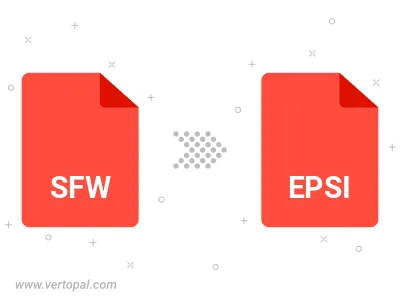Convert SFW to EPSI
Convert SFW images to EPSI format, edit and optimize images online and free.

The SFW file extension stands for Seattle FilmWorks Image, a proprietary bitmap image format created by Seattle FilmWorks, a company specializing in film processing and digital imaging. Although the company is now defunct, SFW files can still be viewed using specific software or converted to standard formats like JPEG. This format is not widely supported by modern image editing software.
EPSI, standing for Encapsulated PostScript Interchange, is a file extension used primarily in the printing and graphic design industries. It stores PostScript data along with a low-resolution preview in bitmap format, facilitating the visualization of graphic content in layout applications without needing to interpret the complex PostScript code. Introduced in the 1980s by Adobe Systems, EPSI files serve as a bridge between different software applications, ensuring consistent and high-quality output in various publishing workflows. Their efficiency and adaptability have made them a standard for exchange of graphic data in professional environments.
Select a SFW file from your computer to initiate the upload.
Customize the SFW to EPSI conversion using available tools before confirming.
After the EPSI conversion finishes, click Download to retrieve the file.

Once installed, Vertopal CLI supports conversion of SFW image into EPSI image.
cd to move into the SFW directory or include the path.